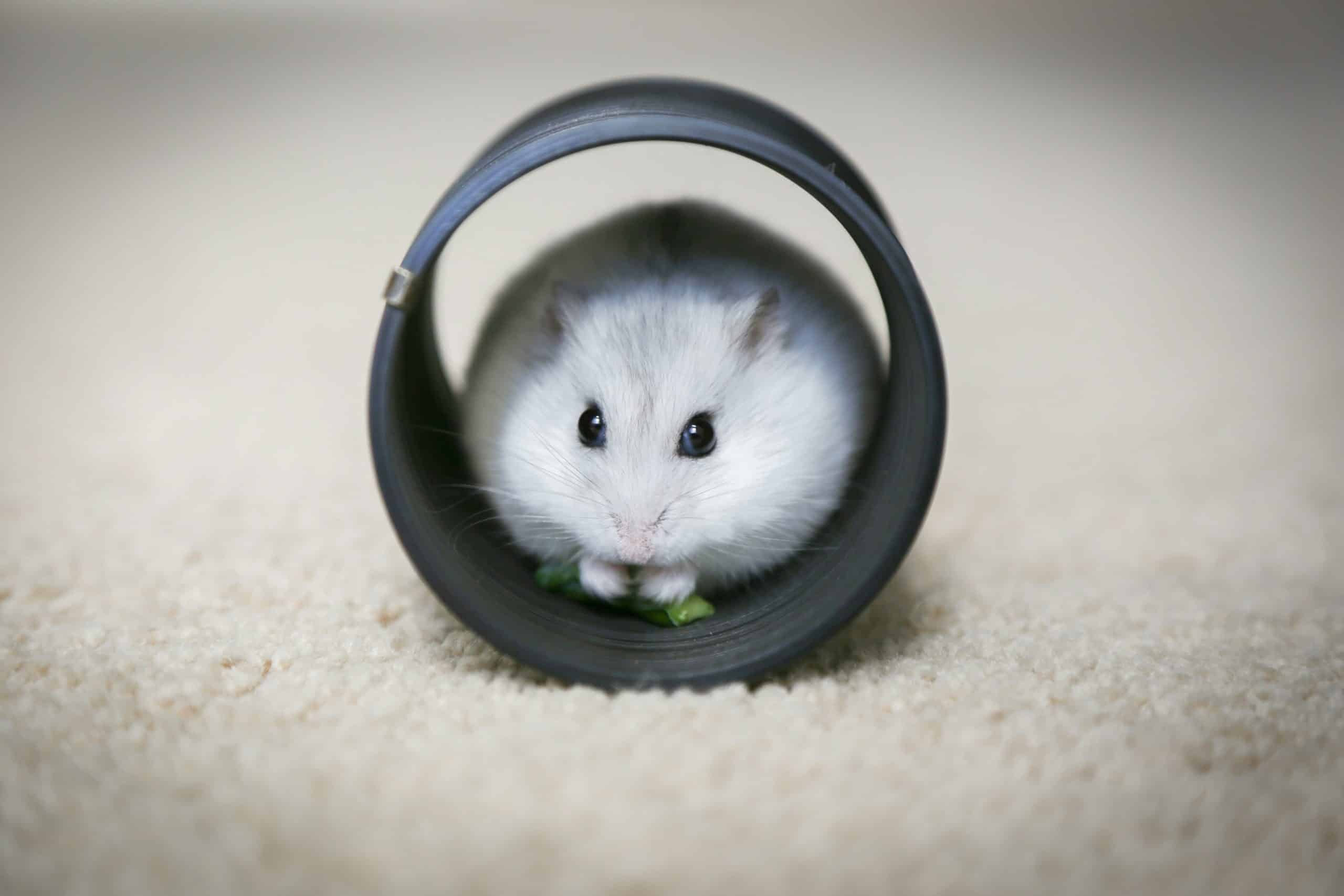Hamsters are beloved pets in households worldwide. Their cute, small size, and friendly demeanor have made them a favorite choice, especially for families with young children. Despite their popularity, many misconceptions surround hamster care. These fallacies can cause unintentional harm to our little friends.
As dedicated pet owners, it’s our duty to debunk these myths and misconceptions to ensure our hamsters receive the best care possible. This article will address some common misconceptions about hamster care, from dietary needs, cage setup, to health and species-specific needs.
Sujet a lire : Preventing overfeeding: tips for pet portion control
Misconception 1: All Hamsters are the Same
Many people mistakenly believe that all hamsters are the same. However, there are different species of hamsters, each with its unique needs and characteristics. The two most common types of pet hamsters are Syrian and Dwarf hamsters.
Syrian hamsters, also known as Golden hamsters, are solitary creatures. They require a lot of space and should never be kept in the same cage with another hamster after they reach maturity. Dwarf hamsters, on the other hand, are social and can live together, but they require careful monitoring to avoid conflicts.
Lire également : How to keep your rabbit’s cage clean and healthy
Recognizing the specific needs of the species you have is crucial for their wellbeing. It’s recommended to research extensively about the type of hamster you own or plan to get. Understand their temperament, dietary needs, and specific care needs to provide them with the best environment possible.
Misconception 2: Hamsters are Fine with Basic Pet Store Cages
A common misconception about hamster care revolves around their cage requirements. Many pet stores sell small, colorful cages marketed for hamsters, which are often woefully inadequate for their needs.
Hamsters need plenty of space to roam and explore. A hamster’s cage should be at least 450 square inches of continuous floor space for Syrian hamsters, even larger for Dwarf species. Multiple levels can add enrichment, but it should not replace floor space. Bar spacing should also be correctly sized to prevent escape or injury.
Moreover, the cage should be decked out with appropriate toys, hideouts, and an exercise wheel. Proper bedding is also crucial. Hamsters are burrowers by nature, so a thick layer of unscented, dust-free bedding is essential for their environment.
Misconception 3: Hamsters Eat Only Seeds and Hamster Food
Many people believe that hamsters only need seeds or commercially available hamster food for their diet. While these foods form a significant part of their diet, hamsters need a balanced and varied diet to maintain their health.
Fresh fruits, vegetables, and proteins like boiled eggs, cooked chicken, or mealworms can supplement the dry food. However, be sure to research which fresh foods are safe for hamsters, as some can be harmful. For example, citrus fruits and onions are toxic to hamsters.
Also, keep an eye on their teeth. Hamster’s teeth continue to grow throughout their life, and they need hard foods or chew toys to wear them down and avoid overgrowth.
Misconception 4: Hamsters Don’t Need Veterinary Care
Just like any other pet, hamsters require regular veterinary care to ensure they’re healthy and happy. Many people believe that because hamsters are small and relatively easy to care for, they don’t need regular vet check-ups. This couldn’t be further from the truth.
Regular visits to a vet experienced with small pets can help detect potential health issues early. Common health problems in hamsters include diabetes, respiratory infections, and dental issues.
Moreover, any drastic change in your hamster’s behavior, eating patterns, or physical appearance needs immediate medical attention.
Misconception 5: Hamsters are Nocturnal
Many people think hamsters are nocturnal, meaning they’re active during the night and sleep all day. Although there is some truth to this, it’s not entirely accurate. Hamsters are crepuscular, which means they’re most active during dawn and dusk.
Forcing your hamster to stay awake during the day can cause stress and negatively affect their health. Therefore, it’s essential to respect your hamster’s sleep cycle and allow them their quiet time during the day.
Every pet deserves the best care possible. Hamsters, with their unique needs, are no exception. By debunking these common misconceptions, we can ensure that our hamsters lead healthy, happy lives.
Misconception 6: Dwarf Hamsters are Just Smaller Versions of Syrian Hamsters
There is a popular belief that Dwarf hamsters are merely smaller versions of their Syrian counterparts. This is a misconception that has been perpetuated by pet shops, who often list only minor differences in care needs between the two species.
In reality, Dwarf hamsters and Syrian hamsters are fundamentally different and require distinct care. For instance, Dwarf hamsters are much more active and need a wheel that is specifically designed for their size to prevent spinal injuries. Moreover, they are prone to a condition known as “wet tail,” a potentially fatal bacterial infection that causes severe diarrhea.
Dwarf hamsters also have different dietary needs. They are susceptible to diabetes, so their diet should be closely monitored and should not be as sugar-laden as what a Syrian hamster might consume.
Lastly, while Syrian hamsters are solitary and territorial, Dwarf hamsters are social creatures that can be kept in pairs or groups, as long as they are introduced properly and monitored for any signs of aggression.
Misconception 7: Any Hamster Cage Will Do
Another common misconception about hamster care is that any small cage from the local pet store will do. Hamsters, regardless of their type, need spacious and well-ventilated habitats.
A tiny cage size can lead to stress, aggression, and unhealthy behaviors in hamsters. Large cages provide hamsters with more room to explore, ensuring their physical and mental wellbeing.
Furthermore, hamster cages should be equipped with suitable accessories. Hamsters will appreciate a few hideouts and tunnels, as they mimic their natural environment. It’s also essential to provide chew toys to keep your hamster’s teeth in check. Hamster teeth continuously grow, and if they don’t have anything to gnaw on, this can lead to serious dental problems.
While pet stores typically offer plastic cages that are easy to clean and handle, they can be harmful if the hamster chews on them, swallowing small plastic parts. Therefore, it’s always best to consider cages made from safer materials, like glass aquariums or wire cages with solid bottoms.
Conclusion
In conclusion, hamster care is far more complex than many people realize. Misconceptions about Syrian and Dwarf hamsters, their dietary needs, cage requirements, and health can lead to inadequate care practices.
Instead of relying on common pet practices, it’s crucial to research and learn about the specific needs of your hamster breed. Whether it’s a Syrian hamster or a Dwarf hamster, each has unique needs that have to be met for them to thrive.
Remember, every hamster deserves a loving home equipped with the right cage size, a balanced diet, and regular veterinary checks. By debunking common myths and learning more about your furry friend’s needs, you can ensure that your hamster leads a long, healthy, and happy life.
So, whether you’re a first-time hamster owner or a seasoned pet enthusiast, let’s strive to give our hamsters the best care possible. Because when we take the time to understand and cater to their needs, we can truly appreciate the joy these adorable, energetic creatures bring to our lives.






